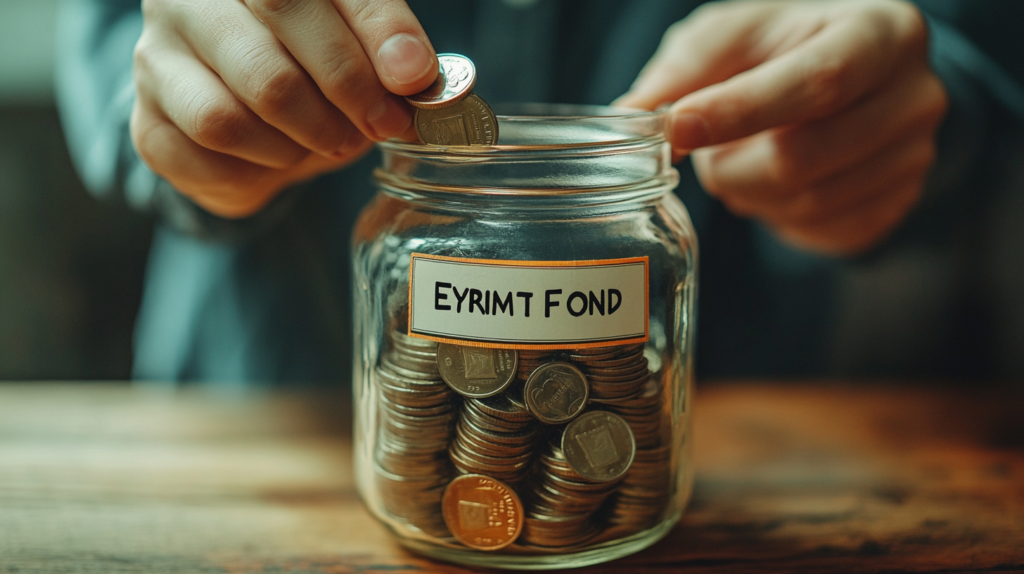
An emergency fund is one of the most critical financial tools for building stability and resilience in life. It acts as a financial buffer, protecting you from unforeseen expenses and ensuring peace of mind. Whether you’re just starting your financial journey or looking to strengthen your savings strategy, understanding the importance of an emergency fund is essential. Let’s explore what it is, why you need one, and how to start building it today.
What is an Emergency Fund?
An emergency fund is a dedicated pool of money set aside to cover unexpected expenses. Unlike regular savings, this fund is specifically meant for emergencies such as:
- Medical bills: Sudden health issues or accidents.
- Car repairs: Fixing a broken transmission or flat tire.
- Home repairs: Addressing a leaking roof or burst pipes.
- Job loss: Covering basic expenses until you find new employment.
The goal is to avoid relying on credit cards or loans during financial crises, which can lead to debt accumulation and stress.
Why is an Emergency Fund Important?
1. Provides Financial Security
Life is unpredictable, and emergencies often come with hefty price tags. An emergency fund ensures you have the resources to handle these situations without jeopardizing your financial goals.
2. Reduces Stress
Knowing you have a safety net in place can significantly ease the mental burden of unexpected financial challenges. It provides peace of mind and helps you stay focused on long-term objectives.
3. Prevents Debt Accumulation
Without an emergency fund, many people turn to high-interest credit cards or personal loans to cover unexpected costs. This can lead to a cycle of debt that’s hard to escape.
4. Protects Long-Term Goals
By using your emergency fund instead of dipping into retirement accounts or investment portfolios, you safeguard your future financial plans from setbacks.
How Much Should You Save?
The amount you need in an emergency fund depends on your lifestyle, monthly expenses, and risk factors. A common guideline is to save three to six months’ worth of essential living expenses.
Factors to Consider:
- Stable income: If you have a steady job, 3 months of expenses may suffice.
- Variable income: Freelancers or gig workers should aim for at least 6 months.
- Dependents: Families or those supporting others may need a larger fund.
- Health and lifestyle: Higher medical risks or costly habits might require additional savings.
How to Start Building an Emergency Fund
1. Set a Realistic Goal
Calculate your essential monthly expenses (e.g., rent, utilities, groceries) and multiply by your desired savings timeframe. Start with smaller milestones, like saving $500 or $1,000.
2. Create a Separate Account
Open a dedicated savings account for your emergency fund. This helps you keep it separate from regular spending and reduces the temptation to dip into it.
3. Automate Your Savings
Set up automatic transfers from your checking account to your emergency fund. Consistent, small contributions add up over time.
4. Cut Back on Non-Essentials
Identify areas in your budget where you can reduce spending and redirect those funds into your emergency savings. Examples include:
- Cooking at home instead of dining out.
- Canceling unused subscriptions.
- Buying generic brands.
5. Use Windfalls Wisely
Tax refunds, bonuses, or unexpected income are excellent opportunities to boost your emergency fund quickly.
When to Use Your Emergency Fund
Reserve your emergency fund for true emergencies—situations that are urgent, necessary, and unexpected. Examples include:
- Losing your job.
- Paying for critical medical treatments.
- Urgent home or car repairs.
Avoid using the fund for non-essential expenses like vacations, new gadgets, or regular bills you can’t afford due to overspending.
Tips to Maintain Your Emergency Fund
- Replenish After Use: If you dip into your fund, make rebuilding it a priority.
- Keep It Accessible: Store your emergency fund in a liquid, low-risk account like a high-yield savings account.
- Review Periodically: As your financial situation changes, reassess your savings goal to ensure it aligns with your needs.
Conclusion
An emergency fund is the cornerstone of a solid financial plan. It shields you from unexpected costs, protects your long-term goals, and provides peace of mind. By starting small, staying consistent, and prioritizing this essential savings goal, you can build the financial resilience needed to weather life’s storms.
